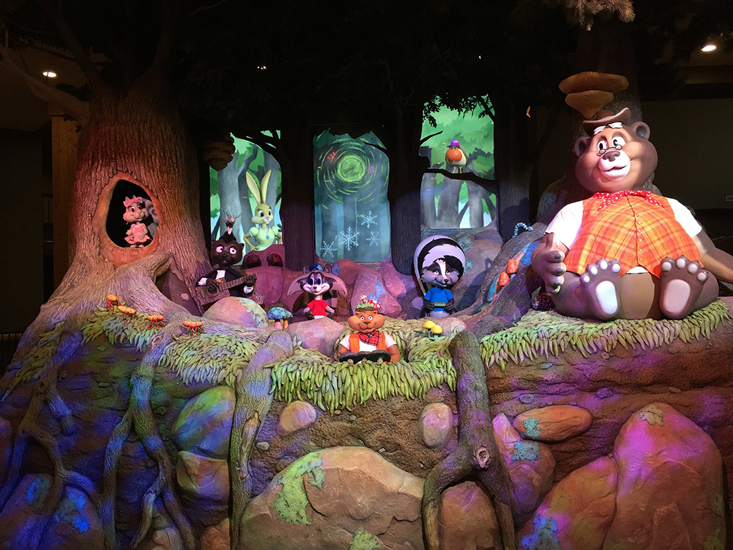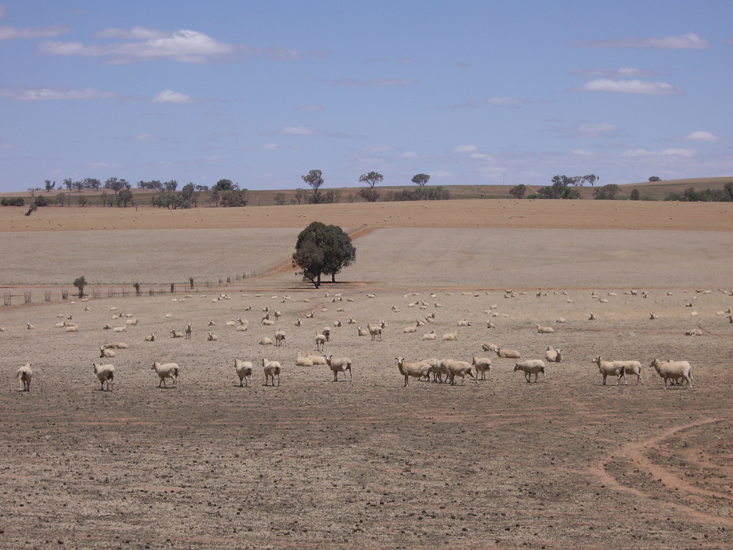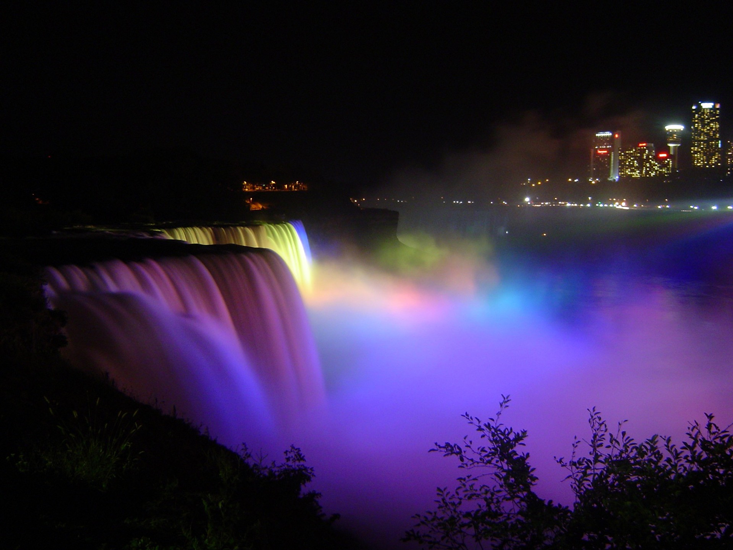How we cope with the disappearance of nature
The environment is dying, and we are looking for solace in animatronic elks

Solastalgia is a characteristic disease of the 21st century, but few know its name. Symptoms include the underlying sense of loss, the vague sensation of separation from the earth, the loss of one’s place, and homelessness within the home. You may have experienced such a feeling, not understanding what it means. Solastalgia is anxiety that we cause ourselves, creating a world in which we do not want to live, a world free from nature.
Nature retreats, and not gradually. According to the World Wide Fund for Nature (World Wildlife Fund, WWF) [an international non-governmental non-governmental organization working in the fields of conservation, research and restoration of the environment / approx. trans. ], more than half of the world's wild vertebrate animals have disappeared in the last forty years. More than 1.1 million sq. Km. grasslands in North America transformed by agriculture. With the current growth rate maintained, forest development in the USA will reduce forest area by 120,000 sq. Km. by the year 2050. The penetration of urban areas into places with high biological diversity will increase threefold from 2000 to 2030.
We know that more serious catastrophes are waiting in line. This winter, the North Pole was located near the freezing point. The partial collapse of the Paris Agreement [ it did not collapse itself - the US president announced the withdrawal of the States from it in 2017 / approx. trans. ] and a sudden surge in the effects of climate change - icebergs the size of Delaware [Delaware area - 6445 sq. km. / approx. trans. Chipping away from Antarctica, the fading of the Great Barrier Reef makes us face the harsh truth. We are building a future that contains less contact with nature and much less biological diversity.
This creates for us, as for the species, a new problem: experiences connected with nature are important for our health, and by destroying the earth, we worsen it. In 2003, Glenn Albrecht , an ecologist-philosopher from the School of Life Sciences and Ecology at the University of Newcastle Australia, coined the term “solastalgia”. Like nostalgia, solastalgia is difficult to pinpoint, but easy to identify: “Solastalgia,” wrote Albrecht, “is pain and illness caused by loss, or the inability to find solace in the current state of local nature. Solastalgia appears along with the understanding that a man’s favorite place of life is under attack. ” Types of attacks may vary. Attack power may vary. Loss and anxiety resulting from an attack do not change.
Glenn Albrecht chose solasta as the root of the new for two reasons. The word solasta contains both solace [solace] and desolation [havoc]. [ In this case, the Russian analogue of solastalgia can be made "empty-field" / approx. trans. ] If nostalgia describes the longing for another place and another time, solastalgia means the longing for the present state, which should have been, by nature, which is not there.
Today solastalgia is spreading more and more. Many generations of small groups reacted to the unfolding ecological disaster - hippies, lovers of remote life, small political and religious groups - but they were all members of subcultures. The general population continued to argue about the scientific results in which it did not understand, and to pretend that the Earth does not change. Now the collapse of the natural order has ceased to be theoretical, and we have a new need for comfort and a new market serving it.
If you are wondering what services appear in this market, you need to go to the Great Wolf Lodge indoor water park at Niagara Falls.

Wigwam Great Wolf - an amusement park dedicated to the theme of wildlife. He is extremely successful in the field of entertainment. There are already 17 such parks in North America. Centerbridge Partners bought this network in 2015 for $ 1.35 billion. If you visit the park in the winter, you won't need to go outside at all. At night, you can stand right next to the entrance doors and fry marshmallows on a small gas fire of an artificial fire, and, in general, everything. Periodically encountered shaggy trees in a huge parking lot are the main attractions of the “nature inside nature” type.
But in the lobby, nature reproduces much better than nature itself. First, there is not cold. In the lobby you always feel like in the second week of summer camp. The insides of the “big room” are a huge log cabin. There is a fireplace, gas, with animatronic wolves, periodically howling, standing on artificial stones. Children running in through the entrance doors immediately capture the animatronic circuit next to the reception. The robots — the elk, the bear, and the tree — are occupied with endless surface chatter, resuming when a child clicks on a sign. The bear, dressed in a pack, announces: "This is the most magical place in all the Northern Forests."
Children listen to him say, “Well, isn't this a wonderful place?”
Elk Mo is joking. “What can be worn always and everywhere? Smile. This is what nature looks like in the epoch after nature. Children look at anthropomorphic robots while their parents pay with credit cards. Under the line where the line ends, a small robotic squirrel sticks his head out and screams. This is followed by hysterical stupidity. The children are pressing the button again. The squirrel sticks his head out again, and shouts again, and the nonsense is repeated again. The children are pressing the button again. They love the squirrel robot. For children, this is paradise. This is a solastalgic paradise.
The idea of solastalgia was born in devastated landscapes, in Australian droughts of the early 2000s. They provided direct evidence of the impact of climate change on mental health. The effect was most pronounced on Aboriginal people, scientists directly meeting with climate change and farmers whose lands were destroyed. In 2006, Nick Higginbotham, who studies health care at Newcastle University, and his colleagues developed a quantitative measure of the “biopsychosocial consequences of ecosystem disturbance” called the Environmental Distress Scale (EDS). They defined solastalgia as a typical reaction “in a context in which the physical environment of a person (house) is transformed by forces destroying identity, health and controllability,” and measured it by asking respondents to agree or disagree with statements like “I miss the feeling of peace and tranquility which was once here ”,“ I’m sad about the disappearance of familiar animals and plants ”,“ The thought that my family will have to move out of here makes me sad ”.
Higginbotham found that the sensation of solastalgia, measured in this way, strongly correlates with other reactions to climate disorders, such as fear or anger. Solastalgia, according to the researchers, gives "an explicit expression, both from a philosophical and empirical point of view, to the ecological dimension of human disorders." 11 years after this work, researchers discovered the effect of environmental changes on the psychological state in various communities around the globe. The effects of warming in Nunatsiavut in Labrador caused solastalgia. In the Central Appalachians, the destruction of mountains and lowland streams by developing mountain peaks caused solastalgia.
Climate-related floods and droughts are often accompanied by anxiety, shock, depression, sadness, despair, numbness, aggression, sleep disturbances, difficulties in communication, acute and post-traumatic disorders, harmful substance abuse and suicide, ”the Canadian Environmental Issues noted in 2016 Psychologists. In Asia, psychiatrists have noted that raising the temperature is related to the number of suicides. A meta-analysis of 60 studies in 2013 led to the conclusion that any standard deviation of global temperature corresponds to There is a 4% increase in interpersonal violence and a 14% increase in intergroup conflict. In 2015, the world's largest medical journal The Lancet convened a health and climate change commission that described solastalgia as a key measure of global mental health, something that “people feel when their land suffers and they lose comfort and opportunity. ”
Solastalgia - the newest disease of mankind, and like other diseases before it, requires medication.

Wigwam Great Wolf offers medicine in the form of nature simulacra. In this sense, the park is part of a long tradition. Florence Nightingale in his book Notes on Factors Affecting the Health, Efficiency, and Management of the British Army Hospitals of 1863 [ in fact, 1858 - approx. trans. ] noted the positive effect for patients of being able to look out the window, and observe “beautiful objects, various objects, especially bright colors”. She thought that something natural, located near your bed, would help you to recover. She was not mistaken
Contact with nature in almost any form has measurable health benefits. According to a Japanese study of people who looked out the window at the forest:
1. diastolic [lower] blood pressure decreased significantly;
2. parasympathetic nervous activity increased significantly, and sympathetic nervous activity decreased significantly;
3. pulse is significantly reduced.
Since 1982, the Japanese Ministry of Agriculture, Forestry and Fisheries has been advertising “Sinrin Yoku” or “Swimming in the Forest”. Topiary therapy demonstrates its results: levels of cortisol, a stress hormone, are reduced in the subjects' saliva, as well as out of pulse and blood pressure.
Roger Ulrich’s study of 1984 is often cited, in which it was found that patients recovering from surgery benefit from contemplating a landscape with trees compared to a bare wall. They noted a decrease in the “postoperative time spent in the hospital, the number of negative evaluations from nurses, the dose of analgesics and the number of postoperative complications”. His research inspires the study of nature-like animations placed in office buildings to relax workers. The therapeutic effect of landscapes has been used for many years in psychiatric hospitals.
For many centuries, researchers of public health have known the connection between green open spaces and good sensations: “There is a well-developed set of evidence supporting the hypothesis that contact with nature gives different types of benefits to human health.” The 2015 survey, where residents of Britain independently reported on health, found a strong positive correlation with the beauty of the local environment, even with regard to socio-economic indicators and pollution. The picturesque nature was not described by the exact number of green landscapes, which led the researchers to the following conclusion: “the aesthetics of the environment can have a stronger influence than previously thought.”
But, in fact, we are not sure for what specific reason nature makes us feel so much better. Some believe that the health benefits of forest therapy are in the presence of essential oils in trees, and the resulting tasty air that we breathe in the forest. But these chemical effects do not explain the recorded effect of the forest on people watching it from the window. However, biodiversity is obviously not required.
If you want to understand how humanity copes with the desire for nature, Niagara Falls has always been a great starting point. In the history of solastalgia and the search for consolations he was in the first positions. Oscar Wilde, during his visit in 1882, described the waterfall as "one of the earliest disappointments of the bride." Twelve million visitors each year come to the waterfall, although now his status as a cliche for the honeymoon has long disappeared. Natural representation attracts artificial ones - ropewalkers, food merchants, and now also casinos.

The essence of the impression made by Niagara Falls is reverent awe. Waterfalls - a classic example of the amazing, overwhelming size of nature, forcing humanity and the individual to feel, in their struggle and vanity, is negligible. Height nourishes the spirit. It brings to the fore the real position of a person in relation to the natural course of things and the total insignificance of the observer.
The irony of Niagara Falls is that the majesty of impressions, the feeling of human powerlessness against nature is the result of the creation of human hands. Nature at the waterfall has always been a deft stunt. The exact amount of water falling down is regulated by the Joint International Commission, which decided in the Niagara Agreement of 1950, which part of the river should be redirected to hydroelectric and other needs, and which part should be used for beauty. During the high season, from April to September, waterfalls give out 2,800 m 3 per second, from eight in the morning to ten in the evening. In low season - two times less.
The waterfall has been naturally destroyed for 5,500 years, after the melt waters raised the level of Lake Erie almost twice. Natural erosion, of course, does not suit people who earn on the landscape. No one will move the two cities located on both sides of the border, and a half meters per year just because of nature. Therefore, in 1969, the United States Engineering Forces decided to perform an extremely human task: to stop nature. Using the dam, they interrupted the flow for the first time since the time when an ice jam blocked the waterfall in March 1848. On the bottom of the bottom they found millions of coins and two dead bodies. A decayed and forgotten woman on her finger found a ring with the inscription "Do not forget me."
Engineers took samples from the edge of the waterfall and found that erosion was greatly reduced due to the redirection of part of the water to hydroelectric needs. Anyway, the engineers decided to show that they can change the waterfalls just at will. In 1973, residents of the city of Niagara Falls from the American and Canadian sides received 220,000 booklets with voting forms. They were offered several options for modifying the waterfall: remove the mound at the base of the waterfall, which will increase the flow, change the water level in the Maid of the Mist Pool dam, or change nothing. The answer was obvious - they decided to leave the waterfalls as they were. Nature must match the photos.
One of the most obvious ways to recognize the presence of solastalgia is to recognize an attempt to get rid of it. “A passionate desire for organic reunion with living landscapes is, in particular, a desire to overcome solastalgia by finding a home connected with other living creatures of the Earth,” wrote Albrecht in his 2006 essay. To retain the naturalness of the waterfall, society retained its appearance, in spite of nature itself, which would eventually erode it altogether.
Today, the aggressive aestheticization of the waterfall continues, although the showiness seems more and more desperate. At night, the fog and the stream of water are exposed to recently updated illumination, costing four million dollars. The podskvetka Niagara Falls - one of the first ventures, organized by people after the discovery of electric light. The electric lights of Niagara were first turned on in 1879 - this year an electric light bulb was invented. [ Actually, the first incandescent lamp was made by Warren de la Rue in 1840. In 1879, Thomas Edison patented a lamp with a platinum thread. Lamps with tungsten filament and air exhaust were invented and patented by A.N. Lodygin in 1883 / approx. trans. ].
The changeable brightness of turquoise and fuchsia provide the perfect backdrop for selfies. And again nature needs to adapt to the camera, this time to the camera of the smartphone.

But at Niagara Falls with their smartphones, people are doing something new. Three rare Pokemon were caught there: Jynxes, Tentacruels, Jolteons. This is the newest entertainment in nature, has captured many people. The game Pokémon Go has reached 50 million users, and even after the inevitable fall in interest, it is installed on one of the ten US smartphones. Last summer, this game attracted more mobile entertainment than Netflix. It's like bird watching without birds. This observation with a guarantee to find something. A 2002 study in Britain found that children ages 8 and up are much more knowledgeable about pokemon than local plants and animals.
Scientists issued a harsh warning to the conservatives: “Evidence obtained from other sources links the loss of knowledge about nature with growing isolation from it.” But there was another news. Pokémon witnessed the fact that Edward Osborne Wilson called "biophilia", an innate desire to meet nature. Niagara Falls offers and monetizes grandeur. Pokémon offer and monetize biophilia. Wigwam Great Wolf offers and monetizes a sense of wildlife. All of them offer the pacification of nature without its main awkwardness: change and decay.
The aestheticization of nature led to its therapeutics. "Nature" as a show turned into a "nature" as a playground. Instead of confrontation, we are doing calm.The end of solace with real nature marks the beginning of solace with "nature." Nature ka fun replaces wildlife. The market is effective: we can buy medicines for the thirst created by the market.
Positive or negative, this trend of development of our culture is a moot point. But this is what we need to survive. “The most important measure that can be taken now is the improvement of adaptive abilities,” as described in one psychiatric study by Australian Aboriginal people suffering from solastalgia. Pokémon, Niagara and Great Wolf wigwam demonstrate our adaptive abilities in work. Our ingenuity, which organized the impending catastrophe, has already found a way out of our sense of desolation. Stopping human development and climate change is difficult. We found an easier way - “fix” nature.
Our species has always dreamed of reunion with nature. The root of the word paradise, paradise [paradise] is the Persian word Pardes, meaning fenced garden. In the Bible, the drama of the Book of Genesis consists in expelling a man and a woman from their animal existence and giving them power over nature along with suffering. They must work to justify themselves, and they are told that they must do everything "on earth, like in heaven." This dream was so strong that it penetrated into worldly ideologies. In all utopias, worlds are described in which people's desires coincide with nature. Instead, our domination has spread even over our natural sense of loss, due to this domination. But our goal has always been "nature."
Partly solastalgia is that we are witnessing the end of this dream. We chose a simpler way of reuniting with nature, construction, rather than self-control. We do not want to treat the dilapidated and beaten world as a home. Instead, we create a painted, fictional, made-up paradise for ourselves.
Morning hours in the lodge of the Great Wolf, when the children are still sleeping, look almost peaceful. The sounds of the forest are heard over the platform, and little hands do not make cartoon robots talk. A non-existent songbird sings endlessly at regular intervals. The air is filled with decent quality imitating natural tranquility. He reminds you of how it is to rest on a lake in the forest. And in the center of the memories there is regret that these are just memories. The pleasure of imitation is permeated with light pain.
The lodge of the Great Wolf - “nature” as an ideal closed system. There, "nature" constantly invites you to spend money. Returning the key to the drawers in the dressing room in the water park, you can get back a cash deposit or a soft toy. In the basement there is a game room, bowling, a spa for mothers and daughters. And the alley of attractions. The perfect symbiosis of "nature" and commerce.
Wigwam - both achievement and abomination at the same time. A deeper form of control. Just like when you are on Niagara Falls, you still have a desire to learn something sublime, to feel the insignificance of a person, and watching a talking animatron moose makes you want to be in the forest. Remains of wildlife in every garden. Perhaps every paradise is someone's ruins.
But the morning calm does not last long. The lobby of the Wigwam Great Wolf is filled with staggering adult and joyful children. The child presses the button and the show begins again. “Isn't it a wonderful place?” Asks the bear in the bundle.
All Articles